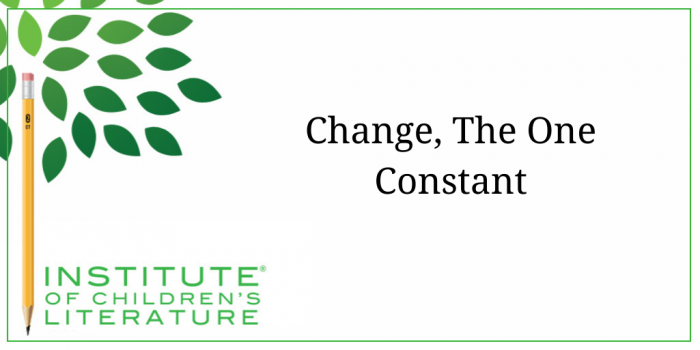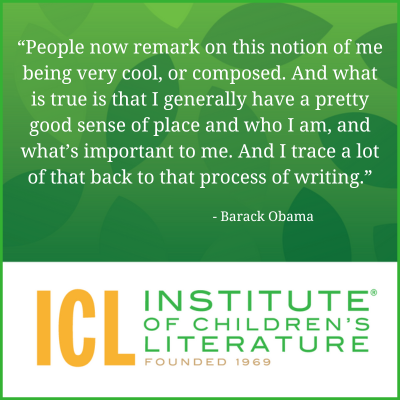1000 N. West Street #1200, Wilmington, DE 19801
© 2024 Direct Learning Systems, Inc. All rights reserved.

Recently I’ve been reviving an old love for drawing and sculpting. I’m never going to make a living at it, but I enjoy it. Connected to this hobby, I’ve also been looking at YouTube videos about drawing and sculpting and I’ve discovered a few things.

So how did they do that? And how can I do that with my drawing, sculpting, and writing?
Now, as a writer, I don’t practice much. I mean, yeah, I write virtually every day. But, lately, I rarely write anything simply for practice. Nearly everything I write is with the intention of selling the end product. And I’ll admit that I looked at that as a virtue. But these kids I’ve been watching in the YouTube videos are willing to simply practice. They invest hours and hours in practice. They give some of their best selves to practice. They draw things, knowing they’re going to stink at it (or at least not be as good as they want). They stretch and struggle and learn from it.
Now, I’ve sometimes taken on writing jobs that I didn’t know if I could do–new genres, new topics, new constraints. The first time I ever wrote an adult novel was because someone asked me to try it and I signed a contract, which meant I was definitely going to produce a novel. (Maybe not a good novel, but a novel.)
So I do practice, sort of. It’s a kind of on-the-job training. But I could do more. I could give myself permission to stink. I could make practice more a part of my life, because I know how much practice changes your work. I’ve just lost sight of it a bit, but I’m going to get back into it.
I know some writers who actually get other, more experienced writers to mentor them. I respect that, but I’m not really quite socially adept enough for it. Still, that doesn’t mean I don’t have mentors.

I typed out the text of the books so I could deal with it from a strictly text basis. I tried to create sentences with the exact same feeling in terms of rhythms and voice, not because I wanted to change my voice, but because I wanted to understand better what picture book voice was. I looked at where the page breaks fell and how they affected understanding of the story. And then I tried writing stories using that model, knowing full well I wouldn’t be able to sell the end product. But knowing, too, that those stories would make me a better writer. I do something similar whenever I’m asked to write in a new genre/format I’ve never tried.
I always start with books by the folks who do it in ways I really like. I don’t choose mentor texts based on their popularity or the awards they’ve won. I pick them because I connect with them. They feel right to me. A truly beautiful piece of work that doesn’t connect with me at all tends not to offer me much. That used to bother me. But now I think it’s just a normal function of the fact that every writer is on their own journey. The mentor texts that work for me are the ones by authors whose journeys cross mine in meaningful ways.
Being a good artist is as much about how you see as it is about how you manipulate different forms of media. Nearly every artist reaches a point where they realize that improvement isn’t just about getting better with their tools, it’s about getting better at seeing, instead of assuming. For anyone who isn’t a practicing artist, if you draw a picture of a dog, you’re really drawing your idea of a dog. You’re not copying the angles and colors and contrasts of a specific, singular actual dog.

For example, suppose you write about the child you saw fussing in a grocery store. If you just write what you perceived, the child will come across whiny and the parent will be saintly—if you blame the child. Or the child will need of more correction if you blame the parent. But imagine you write with no blame involved at all. You climb inside the child and look for what the impetus of that fussing is. You give the child motivation that feels true to him. Then you climb inside the parent and you create real motives for what’s going on with her too. Then you feel that grocery. You give us crisp visuals, distinct sounds, sensual textures, and scents. You don’t write your idea of a fussing child in a grocery, you take us into it and bring it to life. That’s what artists do. That’s what I want to do more and more and more.
Every artist worries about failing, about never accomplishing the thing they dream, about never capturing the vision. Those fears can paralyze a person and create “artist’s block.” And if your art is writing, those fears can result in “writer’s block.” But fear is a natural part of creativity. We become fearful because deep inside us, we know that creativity is important. And doing anything important is scary.
Courage isn’t the absence of fear; courage is being afraid and acting anyway. Courage is staring fear in the face and saying, “You might be right. I might stink. But even if I do, I’m going to just keep doing this until I don’t stink.”
When I was a kid, teachers said I was a talented writer. Which was nice, but it did not mean I didn’t stink. I did. Some of the stuff I produced stunk badly. And when I went off to college, I produced more stinky stuff and some things that were okay. And then I started writing for money and some of that stunk. But some of it was okay.
Today, I make a full-time living from writing. And some of it is more stinky than others. But I’ve gotten better. I didn’t stop when I stunk up the place, even when it was embarrassing. Even when people noticed. Even when I got really vicious reviews. Because stinking isn’t failing.
I found the commitment and growth of the young artists I saw to be inspiring and convincing and more than a little awesome. So, I let their guts mentor me a little to be braver this year. I hope you will too.
With over 100 books in publication, Jan Fields writes both chapter books for children and mystery novels for adults. She’s also known for a variety of experiences teaching writing, from one session SCBWI events to lengthier Highlights Foundation workshops to these blog posts for the Institute of Children’s Literature. As a former ICL instructor, Jan enjoys equipping writers for success in whatever way she can.
1000 N. West Street #1200, Wilmington, DE 19801
© 2024 Direct Learning Systems, Inc. All rights reserved.
1000 N. West Street #1200, Wilmington, DE 19801
© 2024 Direct Learning Systems, Inc. All rights reserved.
1000 N. West Street #1200, Wilmington, DE 19801
© 2024 Direct Learning Systems, Inc. All rights reserved.
1000 N. West Street #1200, Wilmington, DE 19801
© 2024 Direct Learning Systems, Inc. All rights reserved.

1000 N. West Street #1200, Wilmington, DE 19801
© 2025 Direct Learning Systems, Inc. All rights reserved.

1000 N. West Street #1200, Wilmington, DE 19801
©2025 Direct Learning Systems, Inc. All rights reserved. Privacy Policy.